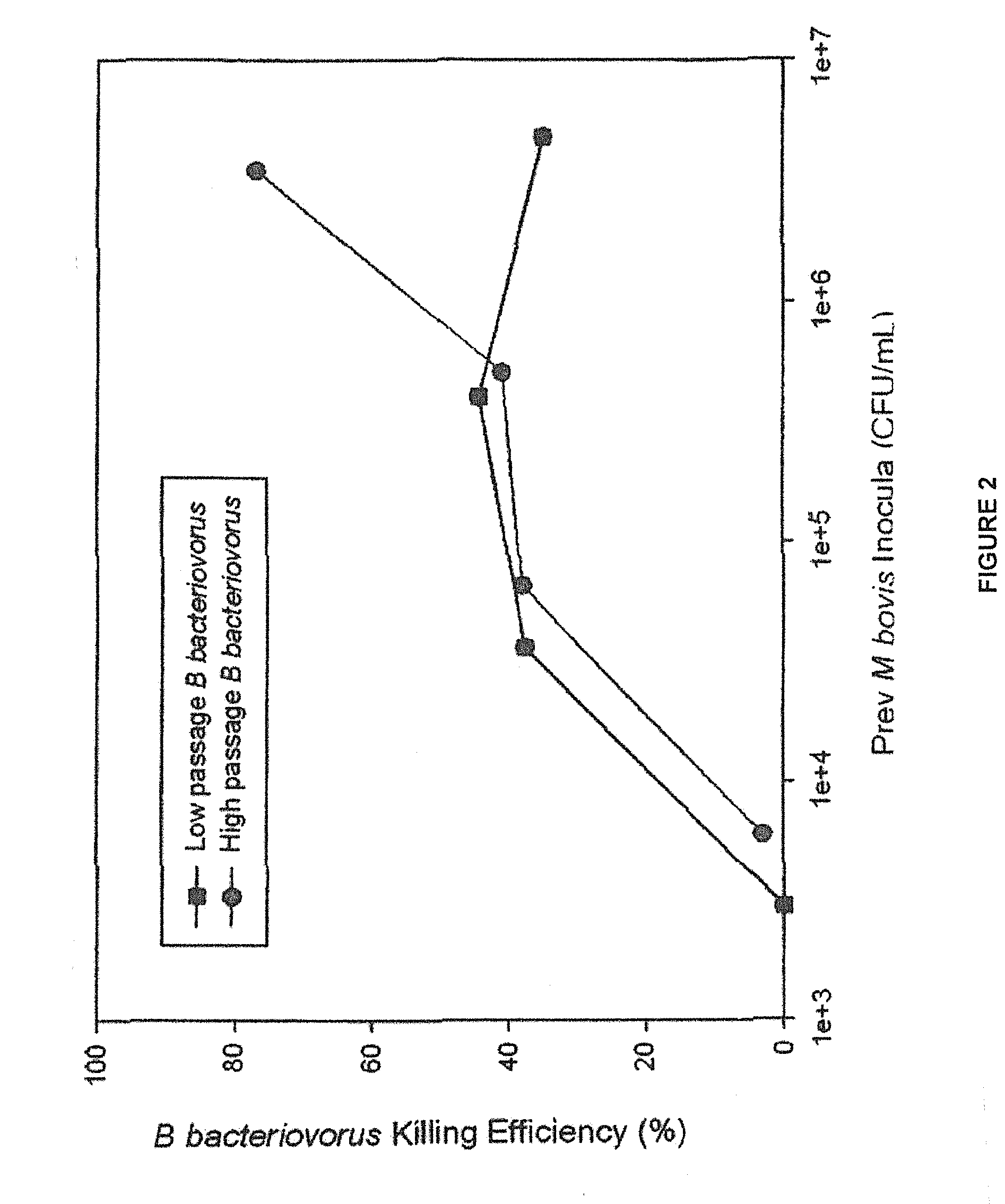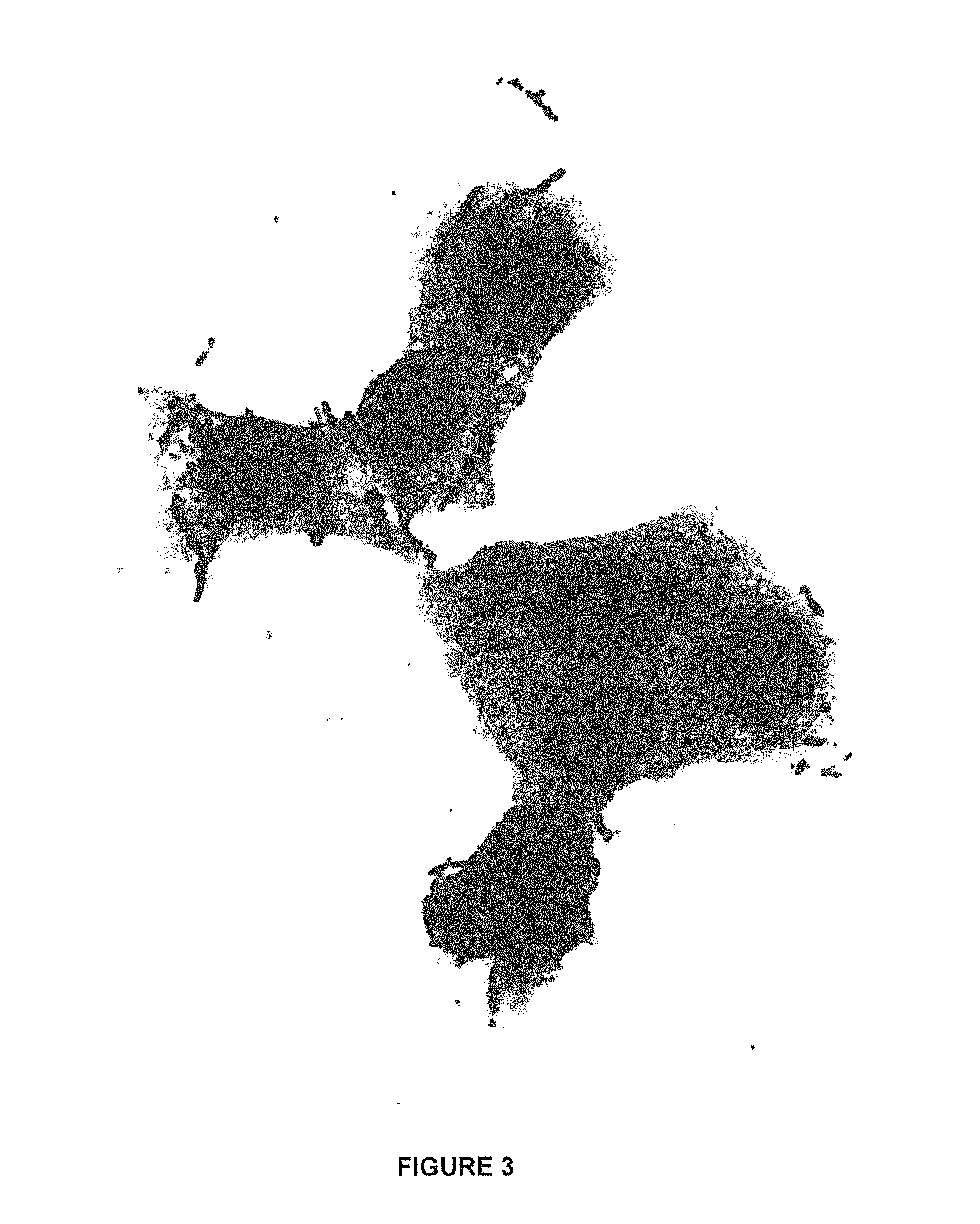Non-chemotherapeutic antibiotic treatment for infections in cattle
a non-chemotherapeutic, cattle-based technology, applied in the direction of antibacterial agents, bacteria material medical ingredients, spray delivery, etc., can solve the problems of direct cost of repeated antibiotic treatment, significant economic loss worldwide, and reduced productivity
- Summary
- Abstract
- Description
- Claims
- Application Information
AI Technical Summary
Benefits of technology
Problems solved by technology
Method used
Image
Examples
example 1
[0028]Bdellovibrio bacteriovorus is a small (0.35×1.2 μm), obligate aerobe, motile (polar flagellum) gram-negative bacterium with obligate host-dependency on a wide range of Gram-negative prey bacteria. B. bacteriovorus are ubiquitous and have been isolated from terrestrial and aquatic environments including soils, rice paddies, rhizosphere of plants, rivers, sewage, fish ponds, and irrigation water. Despite the use of E. coli as the model prey bacterium in the majority of in vitro experiments published, B. bacteriovorus is selectively active against most Pseudomonas spp. and enterobacteria. Although variable between prey cells, a minimum prey density is required to sustain the B. bacteriovorus life cycle. In 2 different studies, prey concentrations of approximately 1.5×105 E. coli per mL (Hespell, Thomashow, Rittenberg. Arch Microbiol 1974; 97:313-327) and 3.0×106 Photobacterium leignathi per mL (Varon and Zeigler. Appl Environ Microbiol 1978; 36(1):11-17), was required for 50% sur...
example 2
In Vitro Investigations
[0033]Our laboratory has been actively investigating the therapeutic potential of B. bacteriovorus, a predatory bacterium capable of attacking and killing other Gram-negative bacteria including the IBK agent M. bovis, as a new treatment for IBK. Data presented in Example 1 showed that ocular instillation of B. bacteriovorus in healthy calves is safe and that it remains viable in cattle tears for up to 24 hours in the absence of prey bacteria. The present study was undertaken to investigate whether B. bacteriovorus can act as an effective M. bovis predator at prey levels present in IBK infected corneal epithelia and ocular secretions.
Materials and Methods—Bacterial Strains.
[0034]Non-hemolytic M. bovis strain M− was utilized in the investigation.
Routine Cultivation of B. bacteriovorus.
[0035]Cultivation of B. bacteriovorus on E. coli was modified from that described by Ruby (Ruby. In: Balows, Truper, Dworking, Harder, Schleifer, eds. The Prokaryotes. 2nd ed. New...
example 3
Treatment of BRD
[0054]Bovine respiratory disease (BRD) is the most costly beef cattle disease in North America. Predisposing factors include immunocompromised host due to stress and / or viral infection that decreases innate and adaptive immune mechanisms of the respiratory tract. Current preventative measures rely on stress-minimization, the practice of metaphylaxis, and vaccination; however vaccination is not 100% effective and the practice of metaphylaxis is associated with antibiotic residue. As a result, our laboratory has investigated the potential of B. bacteriovorus, a predatory bacterium capable of inducing lysis of Gram-negative bacteria, as a non-chemotherapeutic preventative measure for BRD. The investigation involved assessing the ability of B. bacteriovorus to infest and kill the bacterium Mannheimia haemolytica, a major causative agent of BRD.
Materials and Methods
[0055]Motile and active B. bacteriovorus previously grown on 23rd pass non-hemolytic M. bovis were harvested...
PUM
| Property | Measurement | Unit |
|---|---|---|
| Therapeutic | aaaaa | aaaaa |
Abstract
Description
Claims
Application Information
 Login to View More
Login to View More - R&D
- Intellectual Property
- Life Sciences
- Materials
- Tech Scout
- Unparalleled Data Quality
- Higher Quality Content
- 60% Fewer Hallucinations
Browse by: Latest US Patents, China's latest patents, Technical Efficacy Thesaurus, Application Domain, Technology Topic, Popular Technical Reports.
© 2025 PatSnap. All rights reserved.Legal|Privacy policy|Modern Slavery Act Transparency Statement|Sitemap|About US| Contact US: help@patsnap.com



